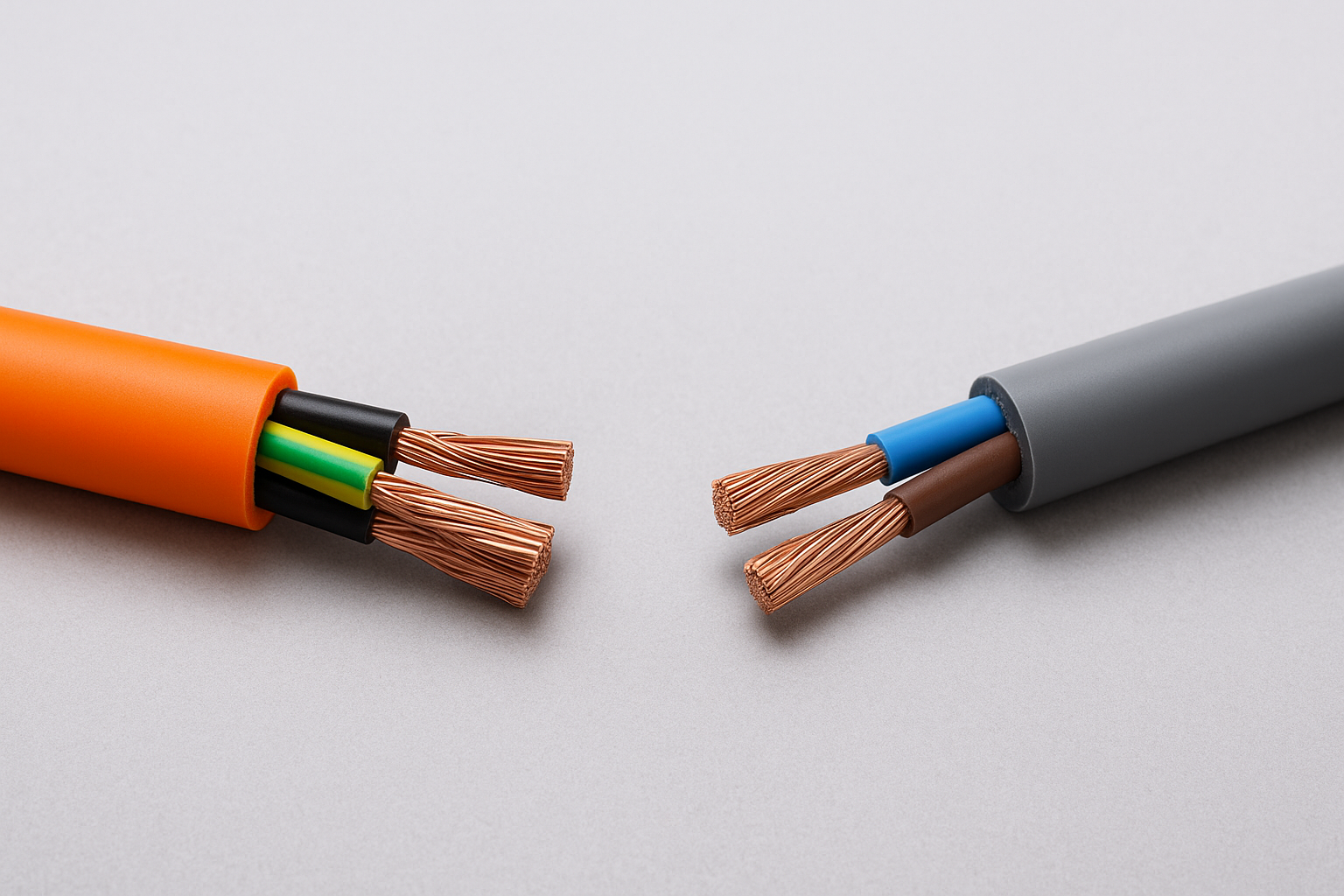What is Cross-Linked Polyolefin (XLPO)?
Cable jackets that soften under fire conditions pose serious safety risks. Cross-linked polyolefin (XLPO) addresses this by forming a heat-stable, cross-linked polymer network that resists melting, dripping, or sagging.
XLPO compounds convert polyethylene (PE) or polypropylene (PP) into a thermoset material with enhanced thermal, electrical, and mechanical performance. These properties make XLPO an excellent choice for flame-retardant cable jackets, insulation, and other industrial polymer applications.
In this article, I’ll explain what XLPO is, how it’s made, and why it’s preferred over traditional thermoplastics like PVC and PE in critical environments.
How XLPO is Made: Cross-Linking Methods and Materials
Still relying on basic PE for cable insulation? Standard thermoplastics melt under heat. XLPO solves this by chemically locking polymer chains into a solid, heat-resistant network.
XLPO Base Resins and Additives
The starting point for XLPO is usually HDPE, LLDPE, or PP. These are modified using one of three cross-linking technologies:
- Silane cross-linking
- Peroxide (thermal) cross-linking
- Electron beam (EB) irradiation
Each process introduces bonds between polymer chains, transforming a melt-processable material into a durable thermoset.
| Method | Suitable Polymers | Cross-Linking Agent | Cure Conditions | Cure Time |
|---|---|---|---|---|
| Silane | PE, PP | Vinyl silane + catalyst | 30–80 °C with moisture | 12–48 hrs |
| Peroxide | XLPE | Dicumyl peroxide | 160–200 °C | 30–60 min |
| EB Irradiation | PE, PP | No chemicals | Ambient, with radiation | Instant |
Process Notes:
- Silane method: Vinyltrimethoxysilane is grafted onto PE or PP, then cured in humid environments. It’s energy-efficient but slower.
- Peroxide method: Produces tight cross-linking using heat-triggered radicals. Used in XLPE power cables.
- EB method: Clean and chemical-free, but requires expensive radiation equipment and shielding—used in high-reliability sectors like aerospace or medical.
Key Properties of XLPO in Cable Applications
Looking for insulation that resists heat, UV, and chemicals? XLPO delivers all of that, plus strong electrical insulation and mechanical flexibility.
Thermal Performance
- Continuous use temperature: 90 °C for peroxide or silane XLPO; 120 °C for EB-cured XLPO.
- Short-circuit temperature: Up to 250 °C without dripping or flowing.
- Tested per IEC 60216 and IEC 60230.
Flame Retardancy Without Halogens
XLPO uses halogen-free flame retardants that char instead of drip. It meets UL94 V-0 and EN 60332-1 standards when properly compounded.
Mechanical Strength
- Tensile strength: ≥15 MPa
- Elongation at break: ≥200%
- XLPO jackets withstand abrasion, bending, and compression, making them ideal for installation in ducts, trays, and tight spaces.
Chemical Resistance
XLPO resists:
- Hydrocarbons and oils
- Acids and alkalis
- Water treeing (a major cause of cable insulation failure)
It outperforms PVC in moist or corrosive industrial settings.
Electrical Insulation
- Dielectric strength: ≥20 kV/mm (even after long-term thermal aging)
- Low loss tangent under voltage stress
- Resists corona discharge and electrical tracking
| Property | XLPO Value | Standard |
|---|---|---|
| Tensile Strength | ≥15 MPa | ASTM D638 |
| Elongation at Break | ≥200% | ASTM D638 |
| Dielectric Strength | ≥20 kV/mm | IEC 60811 |
| Flame Retardancy | Meets EN 60332-1 | IEC/EN |
| Water Tree Resistance | Excellent | ASTM D6097 |
XLPO vs. Traditional Thermoplastics: Which Is Better?
Still using PVC or basic PE for insulation or jacketing? Here’s how XLPO compares to PVC and unmodified PE in demanding applications.
| Property | XLPO | PE | PVC |
|---|---|---|---|
| Max. Temp (Short-circuit) | 250 °C | 120 °C | 70 °C |
| Halogen Content | None | None | High |
| Flame Retardant | Yes | No (unless treated) | Yes (with halogen) |
| UV Resistance | Excellent | Fair | Poor |
| Chemical Resistance | High | Moderate | Moderate |
| Electrical Insulation | Excellent | Good | Fair |
| Lifecycle Cost | Moderate | Low | Low |
| Environmental Compliance | RoHS, REACH | RoHS | Fails RoHS |
Why Choose XLPO?
- Improved safety: Halogen-free, low smoke, no toxic gas emissions
- Durability: Outlasts PVC under UV, moisture, and mechanical stress
- Regulatory compliance: Meets EN, UL, and IEC standards
- Lifecycle value: Lower maintenance and failure risk over time
Conclusion: Why XLPO Matters in Cable Engineering
Cross-linked polyolefin is a next-generation polymer for wire and cable systems. Whether you need flame resistance, electrical insulation, or rugged mechanical properties—XLPO delivers.
If you're designing medium-voltage cables, automotive harnesses, or industrial wire systems, XLPO gives you:
- Heat stability up to 250 °C
- Halogen-free safety compliance
- Stronger, longer-lasting insulation
- Better protection for sensitive electronics
📌 Need help choosing the right XLPO compound?
We offer custom cable compound solutions—including peroxide, silane, and EB-curable formulations.
👉 Contact Our Technical Team for datasheets or sample evaluations.

